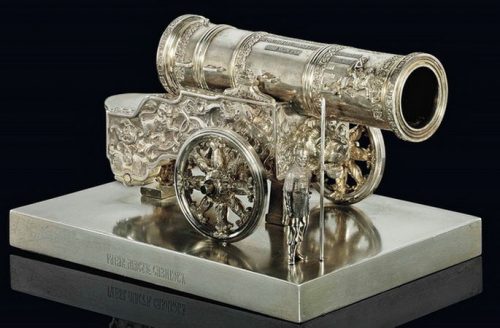
Sazikov jewelry company – from peasants to court jewelers
For seventy years of its existence, the Sazikov jewelry company has left a bright mark in the history of art with its silver works in the Russian style. Sazikov’s manufactory gained worldwide fame thanks to sculptural works on the theme of Russian folklore and an innovative approach to the organization of production.

The path to court manufacturers
The Sazikov jewelry company was founded by Pavel Fedorovich Sazikov, a native of economic peasants. Despite the rich heritage, the beginning of the dynasty’s activities until recently has been poorly understood. Recent works by historians have cast doubt on the previously established opening time of the first jewelry workshop. For a long time, art historians dated the beginning of the firm’s activity to 1793, although archival sources indicate that Pavel Fedorovich arrived in Moscow three years later.
The Sazikov jewelry company, according to researchers, began its work at the very beginning of the 19th century. Documents have been preserved that even the right to the surname Sazikovs received from the Moscow magistrate only in 1811. At the same time, a factory was opened, which produced dishes and church utensils from silver. Several years later, the company’s turnover already exceeded 100 thousand rubles, which gave Pavel Sazikov the right to be called a merchant of the second guild.
The founder’s son, Ignatius Pavlovich, traveled extensively in Europe and was familiar with all the technical innovations. He immediately implemented what he saw in production – under his leadership, the factory began to apply improved casting and embossing technologies. The main merit of the master was the introduction of the division of labor adopted abroad at the manufactory. The casters, grinders and polishers were responsible only for their operations when working with the product, which allowed the company to raise labor productivity to a level unheard of at that time.

The factory was equipped with the most advanced equipment at that time:
- mechanical devices for casting round molds;
- steam engine;
- guilloche machine.
Sazikov’s merits were highly appreciated at the Moscow exhibition in 1835, when a gold medal was awarded to the manufactory for a silver setting commissioned by one of the Moscow churches. At the same time, the firm, the only one among Russian companies, received the right to the title of the imperial court workshop.
After 1845, Ignatiy Sazikov paid more and more attention to silver sculpture, decorating household items and dishes with intricate figurines. Five years later, the jeweler turned to the theme of Russian history for the first time in his works. A significant contribution to the activities of the company was made by the most talented of the owner’s sons – Pavel Ignatievich, who studied drawing, foundry and minting in Paris.

International glory of Russian jewelers
One of the most grandiose works by Pavel Sazikov is a silver candelabrum with a sculptural scene depicting Dmitry Donskoy on the Kulikovo field. The exhibit made a splash at the London exhibition and brought the artist a gold medal. The admiration of European experts was also aroused by another piece of the jeweler – a collection of nineteen items with scenes from the life of the Russian peasantry. Wine cups, coffee pots, jugs and paperweights were embossed, and the characters in the scenes looked stunningly realistic.
Participation in the exhibition brought the company worldwide fame and foreign orders. Nicholas I was very pleased with the work of his court jewelers. The firm was entrusted with the participation in the decoration of the service ordered by the emperor from the English company “Mortimer and Hunt”. By this order, the Sazikovs created the composition “A Knight on Patrol”, which was in no way inferior to the works of London masters.

In 1868 Ignatiy Sazikov died, and the case passed to his heirs. Pavel briefly outlived his father, and after his death, the business began to gradually fade away. Intensive competition led to the fact that the financial situation was shaken – at first the store in Moscow was closed, and then the family had to sell the mansion in St. Petersburg. The enterprise ceased to exist in 1887, and all the property passed to the Khlebnikov jewelry company.
At antique auctions, the products of the renowned firm of the last third of the XIX century are most often found – silver utensils and household items decorated with chasing, engraving and cloisonné enamel.
Sazikov products
Silver gilded icon depicting Abraham greeting the Holy Trinity (30.6×26.3 cm), Sazikov, Moscow, 1862-1866.













